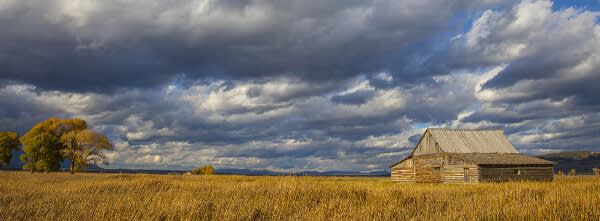
We tend to miss a lot when we travel. Our attention to the good stuff is siphoned away by the stresses of wrangling a group, coordinating logistics, or paying $18 for a club sandwich that tastes like carpet. This is what makes photography so powerful—it captures and preserves the great parts. Photographer extraordinaire, Loretta Grande, offers these tips on how to take your pictures and make a collage that looks perfect.
In the magic hour. If anything stands out as a “Yes! I must have a picture of that!” then find out when it’ll have the best conditions. Travel and photography sites often make notes about the best time to shoot. For instance, the Grand Tetons are best shot at sunrise, since anytime in the afternoon will cast hazy light. But hey, if hazy light’s your thing, more power to ya.

Ask a local. Talking to locals is a great way to learn about areas perhaps neglected by your typical travel guide. Who knows, maybe you’ll go on adventures together and in 20 years you’ll look back on your lifelong friendship, so grateful you read this blog and asked them about places off the beaten path of besocked and sandled tourists.
Look for the overlooked. It’s the little things that define a community. Think of all the highway towns turned must-sees just because of some weird statue. More common examples are signs. You may take your local signage for granted—the locals of your destination may treat theirs the same—but whether a sign is hand-painted, weathered, popularly punny, accidentally explicit, or vintage neon, it’s full of character.

Ride the wind, cloud whisperer. Of course, take advantage of the light. If and when it’s sunny, find the perfect spot for sunset and sunrise photos. But just because the sun isn’t shining doesn’t mean your photo op is ruined. Waterfalls looks great when it’s cloudy or overcast, and a little rain never stopped any dogged photographer.
Flora and fauna. A good way to give your photos some life is to include some actual life, as it turns out. Do any plants or animals define your destination, like eagles, whales, or deadly wasps? How about natural phenomena like the Northern Lights or Yellowstone’s change of the seasons? Play with scale, because sometimes a surface close-up says more than a landscape. Maybe it’s a texture like desert sand or barn wood that best captures the spirit of the area.

Finally, when you’re assembling your pictures into a collage, keep these tips in mind:
Balance your collage. Take a step back to look at the collage as an individual image. We tend to hone in on cells in Collage, so it always helps to get fresh eyes and new perspectives.
Vary the scope of your images. Mix the zoomed ins with the zoomed outs. See the mountain’s face of snow-topped trees; see the pendant icicles on a single branch. The pairing shows the vast beauty of nature.
Never fear, PicMonkey’s here! You researched, you scheduled, you camped out, you shot for hours, but you didn’t catch the optimal conditions. Most things are out of your hands, but PicMonkey is here to give some extra control. Use PicMonkey filters and color correction features to enhance your photos.

